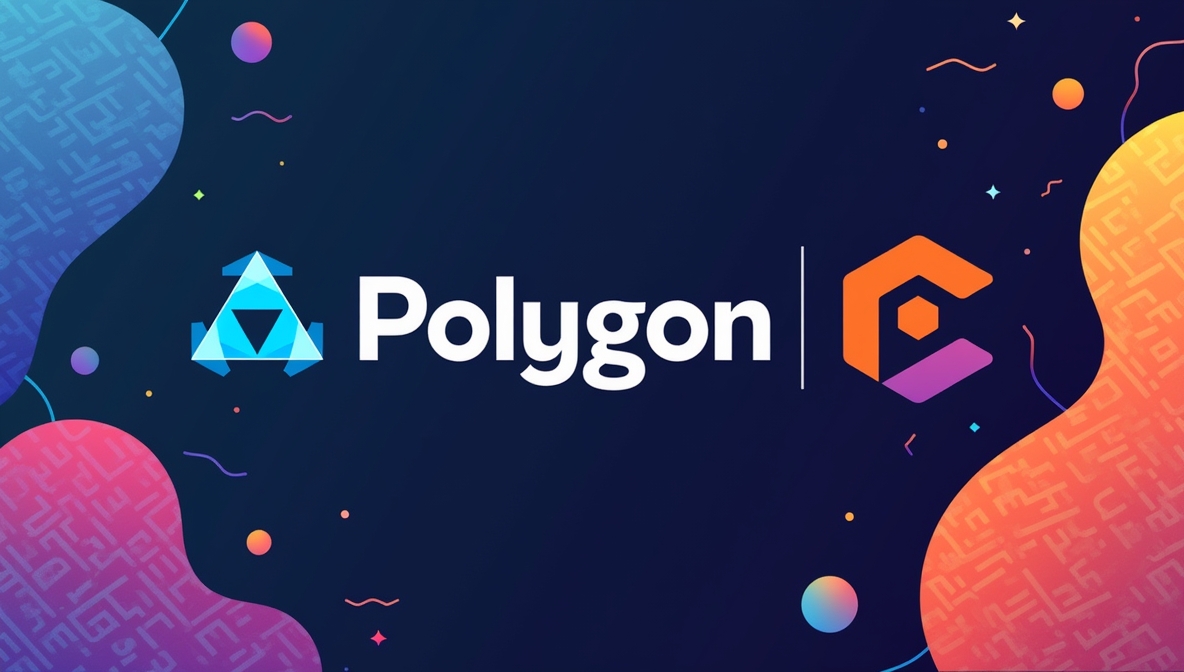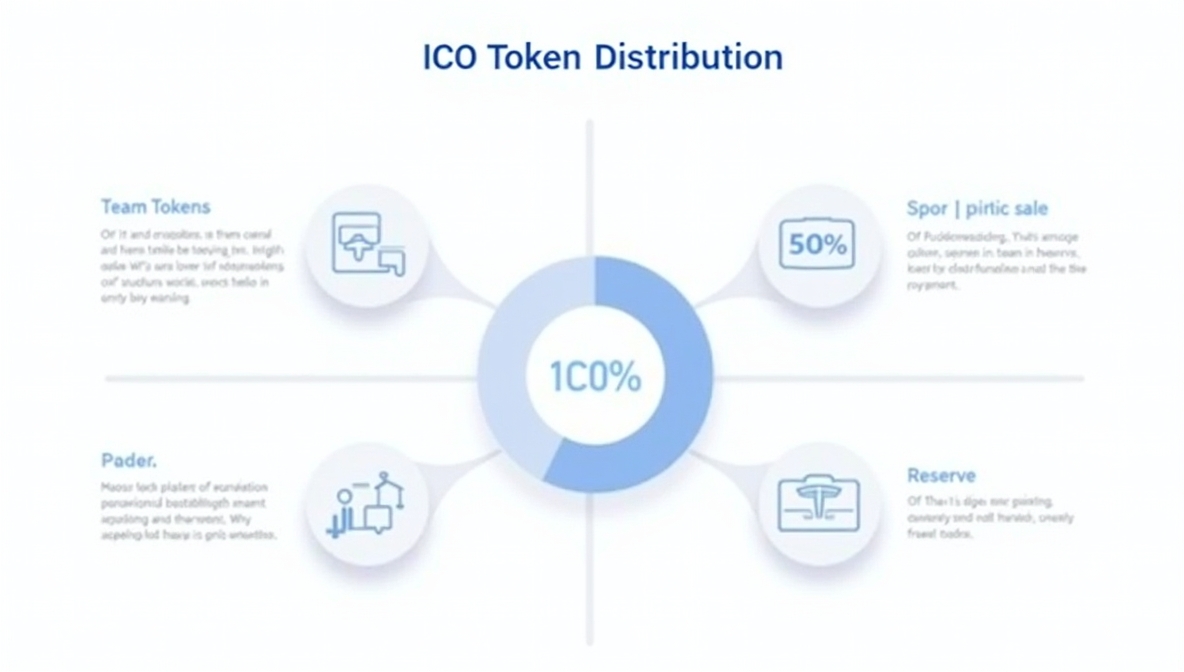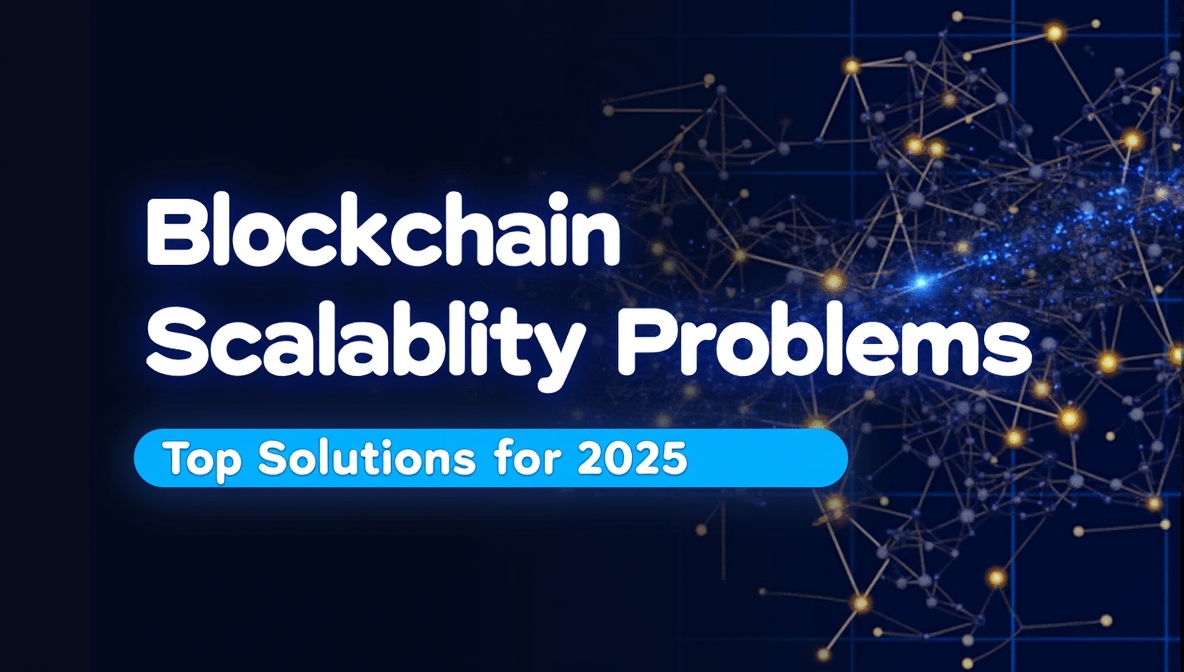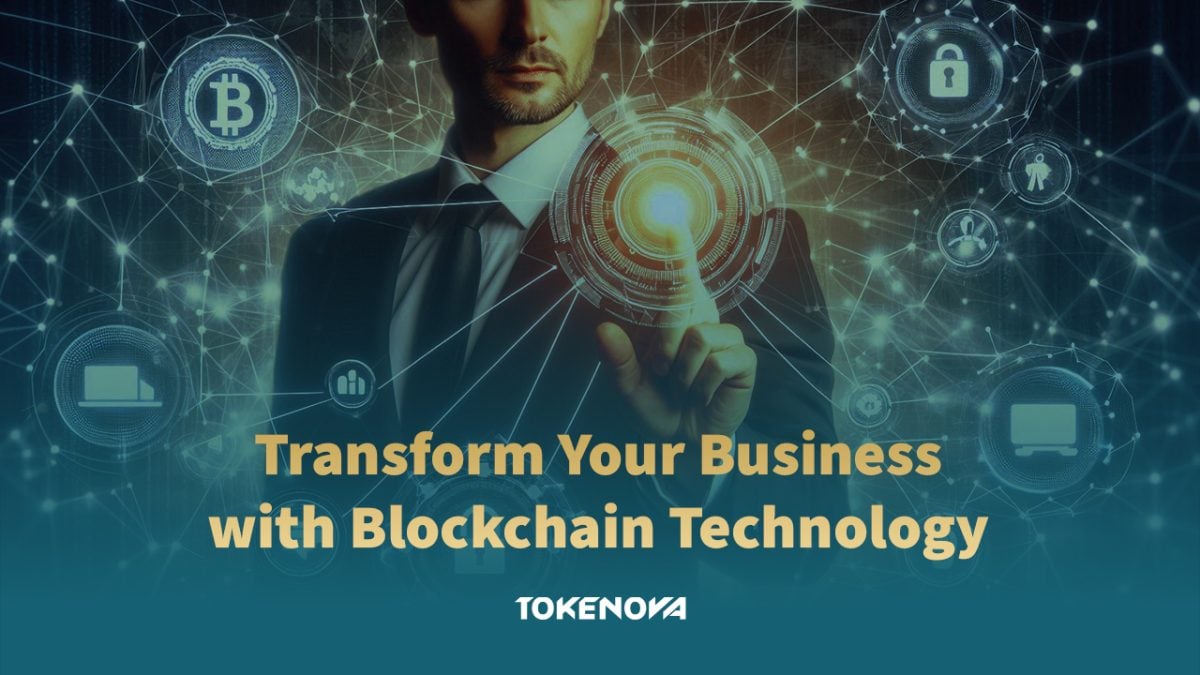Struggling to fund your groundbreaking idea? Feeling like traditional funding routes are too slow or inaccessible? You’re not alone. Many innovators are turning to Initial Coin Offerings (ICOs), a revolutionary fundraising method that has transformed the way startups and blockchain projects raise capital.
Think of an ICO as a crowdfunding campaign, but with a digital twist. Instead of pre-ordering a product or donating to a cause, you’re investing in a project’s future by purchasing digital tokens. These tokens can represent anything from access to a platform, future profits, or even voting rights in a decentralized ecosystem.
In this guide, we’ll break down how initial coin offerings work, explain the ICO meaning and process, and provide a clear overview of this innovative fundraising method. Whether you’re an entrepreneur looking to launch your own ICO or an investor curious about the potential rewards (and risks), this guide will give you the inside scoop.
We’ll explore:
- The basics of ICOs and how they differ from traditional fundraising methods like IPOs.
- The step-by-step process of launching and participating in an ICO.
- The different types of tokens (utility vs. security) and their regulatory implications.
- The potential rewards of investing in ICOs, as well as the risks and challenges you need to be aware of.
- The evolving regulatory landscape and how it impacts ICOs globally.
By the end of this guide, you’ll have a solid understanding of ICOs, empowering you to make informed decisions in this dynamic and fast-paced space. Let’s dive in and separate the wheat from the chaff understanding what makes an ICO tick and how you can navigate this exciting world of crypto fundraising.
ICOs: The Basics
An Initial Coin Offering (ICO) is a fundraising method used primarily by blockchain and cryptocurrency projects to raise capital. Unlike traditional Initial Public Offerings (IPOs), where companies sell shares, ICOs involve the sale of digital tokens to early supporters. These tokens can serve various purposes, such as granting access to a platform, enabling participation in a decentralized network, or representing a stake in the project’s future success. In essence, ICOs allow investors to support innovative projects in their earliest stages, often before they have a fully developed product.
One of the main appeals of ICOs is their accessibility. Traditional fundraising methods, like IPOs or venture capital, often come with significant barriers, including regulatory hurdles, high costs, and limited access for smaller investors. ICOs, on the other hand, enable projects to raise funds directly from a global audience, often with fewer restrictions. This has made ICOs particularly attractive to startups in the blockchain space, where innovation moves rapidly and traditional funding routes may not be feasible.
However, the ICO model is not without its challenges. In the early days, particularly during the 2017-2018 boom, the lack of regulation and oversight led to a surge in both legitimate projects and fraudulent schemes. Many projects promised high returns but failed to deliver, leaving investors with significant losses. Studies suggest that over 80% of ICOs during that period were either scams or failed to meet their goals. This lack of accountability created a reputation for ICOs as a high-risk, high-reward investment.
Despite these challenges, ICOs have played a significant role in the growth of the blockchain industry. For example, Ethereum’s 2014 ICO raised $18 million, which funded the development of a platform that now underpins much of the decentralized finance (DeFi) and non-fungible token (NFT) ecosystems. Today, the ICO landscape is evolving, with more structured alternatives like Security Token Offerings (STOs) and Initial Exchange Offerings (IEOs) emerging to address some of the risks associated with traditional ICOs.
In summary, ICOs are a unique and innovative way for blockchain projects to raise capital, offering opportunities for both entrepreneurs and investors. However, they come with significant risks, making it essential for participants to approach them with caution, thorough research, and a clear understanding of the project’s goals and viability.
Understanding How ICOs Function
To truly grasp how initial coin offerings work, let’s break down the typical steps involved. From the initial idea to the distribution of tokens, each stage plays a critical role in the ICO process. Success depends on careful planning and execution at every step.
Launching an ICO: The Process
Here’s a step-by-step look at how a project typically launches an ICO:
1. Idea and Whitepaper
Every ICO starts with an idea a problem the project aims to solve using blockchain technology. This idea is developed into a whitepaper, a detailed document that serves as the project’s blueprint. The whitepaper outlines the problem, the proposed solution, the technology being used, the team behind the project, and the specifics of the token sale. A well-written whitepaper is essential for gaining investor trust, as it demonstrates the project’s vision, feasibility, and long-term potential.
2. Creating Tokens and Smart Contracts
Once the concept is solidified, the project creates its digital tokens. These tokens are often built on existing blockchain platforms like Ethereum, using standards such as ERC-20. To manage the sale and distribution of tokens, projects use smart contracts self-executing programs on the blockchain that automate the process. Smart contracts ensure transparency, eliminate the need for intermediaries, and enforce the rules of the token sale, such as pricing and distribution.
3. Marketing and Building Community
Marketing is a critical component of any ICO. Projects use a variety of channels, including social media, online forums, and content marketing, to attract potential investors. Building a strong, engaged community is key to the ICO’s success. This involves not only promoting the project but also fostering trust and excitement around its vision. Effective marketing often includes regular updates, AMA (Ask Me Anything) sessions, and active engagement with the community.
4. Token Sale Stages
The token sale typically occurs in multiple phases, each designed to build momentum and secure funding:
Private Sale: This is the first stage, where tokens are offered at a discount to early investors, often including venture capital firms or angel investors. The private sale helps secure initial funding and provides strategic support from experienced backers.
Pre-Sale: In this stage, tokens are offered to a broader group of early supporters, often at a smaller discount than the private sale. The goal is to generate interest and build a community of believers before the public launch.
Public Sale: The final stage is open to the general public. This is where the project aims to raise the majority of its funds. Tokens are sold at the standard price, and the sale continues until the hard cap (maximum funding goal) is reached or the sale period ends.
Post-Sale: Delivering on Promises
Once the token sale concludes, the project distributes the tokens to investors. The funds raised are used to develop the project according to the roadmap outlined in the whitepaper. The value of the tokens after the ICO depends on the project’s success and the demand in the secondary market (e.g., cryptocurrency exchanges).
The real challenge begins after the sale, as the team must deliver on their promises. This includes developing the technology, building the platform, and creating real-world utility for the tokens. Long-term success depends on the team’s ability to execute their vision and generate value for token holders.
Now that we’ve explored how ICOs function, it’s important to understand the different types of tokens offered in these fundraising events. From utility tokens to security tokens, each serves a unique purpose and comes with its own set of regulatory implications. Let’s dive deeper into the world of ICO tokens and what they mean for investors.
Decoding Token Types in ICOs
Not all tokens are the same, and if you’re thinking about investing in an ICO, it’s important to know the difference between the two main types: utility tokens and security tokens. It’s kind of like knowing the difference between a movie ticket and a share of stock one gets you in the door, while the other gives you a piece of the action.
Utility Tokens: Your Pass to the Platform
Utility tokens are like a key that unlocks access to a specific product or service. They don’t represent ownership in the project, but they let you use what the project has built. Think of them as a membership card or a voucher that gives you special access.
Ethereum’s Ether (ETH): ETH is the fuel that powers the Ethereum network. You need it to pay for transactions (called “gas”) and to interact with smart contracts. Without ETH, you can’t do much on Ethereum whether you’re sending tokens or using a decentralized app.
Filecoin (FIL): Filecoin is a decentralized storage network. If you want to store files on it, you’ll need FIL tokens to pay for the service. On the flip side, if you have extra storage space, you can earn FIL by renting it out. It’s like Airbnb, but for your hard drive.
Basic Attention Token (BAT): BAT is used in the Brave browser to reward users for watching ads. You can then use your BAT to tip your favorite content creators. It’s a new way to think about online advertising, where users and creators both benefit.
In short, utility tokens are all about access. They’re designed to be used within a specific ecosystem, and their value comes from how useful the platform is to its users.
Read More: Launch an ICO: Your Step-by-Step Guide
Security Tokens: Ownership with Rules
Security tokens, on the other hand, are more like digital shares. They represent ownership in a company or asset, and they often come with perks like dividends, profit-sharing, or voting rights. But here’s the catch: they’re regulated just like traditional stocks, which means there are rules to follow.
tZERO (TZROP): tZERO is a platform for trading digital securities. Their token, TZROP, gives holders a share of the company’s revenue. It’s like owning a piece of the stock exchange itself.
Real Estate Tokens: Platforms like RealT let you buy tokens that represent a slice of a real estate property. If the property earns rental income, you get a cut. It’s a way to invest in real estate without needing to buy a whole building.
Because security tokens represent ownership, they’re subject to strict regulations. Projects that issue them need to comply with laws set by agencies like the SEC in the U.S. If they don’t, they could face fines or even legal action.
The Regulatory Tightrope
Getting the classification right is a big deal. If a project calls a security token a utility token, they could end up in hot water with regulators. For example, the SEC has gone after projects like LBRY and Ripple for selling unregistered securities. These cases show just how important it is to play by the rules.
So, what’s the bottom line? Utility tokens give you access to a platform or service, while security tokens give you a financial stake in a project. But with security tokens, you’re also dealing with regulations, which can make things more complicated.
For investors, the key is to know what you’re buying. Are you getting a key to the door or a piece of the pie? And for projects, it’s about making sure they’re on the right side of the law. In the fast-moving world of crypto, getting this right can mean the difference between success and failure.
The Allure of ICOs: Why They Matter
ICOs have become a game-changer in the startup world, offering unique advantages for both projects and investors. They’ve turned the traditional fundraising playbook on its head, creating a new way for innovative ideas to get off the ground. But what makes ICOs so appealing? Let’s break it down.
1. Early Access to High-Potential Projects
One of the biggest draws of ICOs is the chance to invest in projects at the earliest stages. Traditionally, this kind of opportunity was reserved for venture capitalists or wealthy investors with the right connections. ICOs, however, open the door for everyday people to get in on the ground floor of potentially groundbreaking projects.
For example, early investors in Ethereum’s ICO in 2014 bought Ether (ETH) for around $0.31 per token. Fast forward to today, and ETH has seen massive growth, making those early investments incredibly lucrative. Of course, not every ICO turns out like Ethereum, but the potential for significant returns is what makes this space so exciting.
2. Democratizing Fundraising
ICOs level the playing field for startups, especially those that might not fit the mold for traditional funding. Securing venture capital or bank loans can be a long, grueling process, often requiring connections, a proven track record, or a business model that fits into a specific box. ICOs, on the other hand, allow startups to raise funds directly from their future users and supporters no middlemen required.
This is particularly beneficial for projects in emerging markets or those working on cutting-edge technologies that traditional investors might not fully understand. By connecting directly with their audience, startups can build a community of believers who are invested not just financially, but emotionally, in the project’s success.
3. The Potential for Big Returns
Let’s be real: one of the main reasons people are drawn to ICOs is the potential for huge gains. When a project takes off, the value of its tokens can skyrocket, turning early investments into life-changing sums. For instance, early backers of projects like Chainlink (LINK) or Binance Coin (BNB) have seen their investments multiply many times over.
But here’s the catch: with great potential comes great risk. The crypto market is notoriously volatile, and many ICOs fail to deliver on their promises. For every success story, there are dozens of projects that never gain traction or, worse, turn out to be scams. That’s why it’s crucial to approach ICOs with a clear understanding of the risks involved.
4. A New Way to Fund Innovation
ICOs aren’t just about making money they’re also about funding innovation. By allowing startups to raise capital without jumping through the usual hoops, ICOs have enabled a wave of creativity and experimentation in the blockchain space. From decentralized finance (DeFi) to non-fungible tokens (NFTs), many of the most exciting developments in crypto have been fueled by ICOs.
For example, the rise of DeFi platforms like Uniswap and Aave can be traced back to early funding through token sales. These projects have since revolutionized how we think about financial services, offering decentralized alternatives to traditional banking.
Why ICOs Still Matter
Despite the risks, ICOs remain a powerful tool for funding innovation and democratizing access to investment opportunities. They’ve opened the door for a new generation of startups and given everyday investors a chance to be part of the next big thing.
As the crypto space continues to evolve, ICOs are likely to adapt as well. New models like Security Token Offerings (STOs) and Initial Exchange Offerings (IEOs) are already addressing some of the challenges of traditional ICOs, offering more regulated and secure ways to raise funds.
ICOs have reshaped the fundraising landscape, offering a unique blend of opportunity, risk, and innovation. For investors, they’re a chance to get in early on groundbreaking projects. For startups, they’re a way to bypass traditional gatekeepers and connect directly with their audience. But as with any investment, it’s crucial to approach ICOs with caution, do your research, and never invest more than you can afford to lose.
Read More: Crowdfunding and Tokenization: Your Ultimate 2025 Guide
The Dark Side of ICOs: Navigating the Risks
While the potential for profit in ICOs can be appealing, it’s essential to recognize the significant risks involved. The ICO space is not without its challenges, and investors must approach it with caution, thorough research, and a clear understanding of the potential downsides.
A Lack of Regulation: A Risky Landscape
One of the most significant risks in the ICO market is the lack of consistent regulation. Unlike traditional financial markets, which are tightly controlled, the ICO space operates in a largely unregulated environment. This has made it a target for scams and fraudulent schemes, as bad actors can exploit the absence of oversight.
For example, the Pincoin and iFan scandal in Vietnam is a stark reminder of the dangers. These ICOs promised investors unrealistically high returns, even guaranteeing monthly profits. In reality, they were Ponzi schemes that defrauded approximately 32,000 investors out of $660 million before collapsing. This case underscores the importance of skepticism and due diligence when evaluating ICOs.
Market Volatility: High Risk, High Uncertainty
The cryptocurrency market is known for its extreme price swings, and ICO tokens are no exception. Even if a project appears promising, the value of its tokens can fluctuate dramatically, often without warning. This volatility can lead to significant losses for investors, especially if they buy in during a hype cycle.
Moreover, many ICO projects fail to deliver on their promises. Some never progress beyond the whitepaper stage, while others struggle to develop a functional product. When this happens, the tokens can lose most or all of their value, leaving investors with little to show for their investment. During the ICO boom of 2017-2018, for instance, over 80% of projects were either scams or failed to meet their goals.
The Flip Side: Success Stories
Despite the risks, ICOs have also been a catalyst for innovation and success in the blockchain space. A prime example is Ethereum, which raised approximately $18 million in its 2014 ICO by selling Ether (ETH) at around $0.30 per token. This funding was pivotal in developing the Ethereum platform, which has since become a cornerstone of the blockchain ecosystem, supporting decentralized applications (dApps), DeFi, and NFTs. Today, ETH is one of the most valuable cryptocurrencies, demonstrating the potential of well-executed ICOs.
Key Takeaways
- Conduct Thorough Research: Before investing in an ICO, carefully evaluate the project. Examine the team’s background, the whitepaper, and the roadmap. If anything seems unclear or too good to be true, proceed with caution.
- Watch for Red Flags: Be wary of projects that promise guaranteed returns, have anonymous teams, or rely heavily on aggressive marketing. These are often signs of potential scams.
- Prepare for Volatility: The crypto market is inherently unpredictable. Only invest what you can afford to lose, and be prepared for the possibility of significant price swings.
- Learn from Past Examples: Cases like Pincoin and iFan highlight the risks of unregulated markets, while success stories like Ethereum show the potential rewards of legitimate projects.
ICOs offer a unique opportunity to invest in innovative projects at an early stage, but they come with substantial risks. Scams, market volatility, and project failures are all common challenges in this space. To navigate these risks, investors must stay informed, conduct thorough research, and approach ICOs with a critical eye. By doing so, they can better position themselves to identify legitimate opportunities while avoiding potential pitfalls.
The Regulatory Landscape: A Shifting Terrain
The regulatory environment for Initial Coin Offerings (ICOs) is in a state of constant flux, with governments worldwide working to strike a balance between fostering innovation and protecting investors. This evolving landscape creates a complex patchwork of rules that can be challenging for both projects and investors to navigate. Here’s a breakdown of how key regions are approaching ICO regulation in 2025, based on the latest developments and data.
United States: The SEC and the Howey Test
In the U.S., the Securities and Exchange Commission (SEC) remains the primary regulator for ICOs. The SEC uses the Howey Test, a legal framework established in 1946, to determine whether a token qualifies as a security. The test evaluates whether there’s an investment of money in a common enterprise with an expectation of profits derived from the efforts of others. If a token fails this test, it’s classified as a security and must comply with SEC regulations, including registration and disclosure requirements.
This stringent approach has led many ICO projects to exclude U.S. investors or face legal challenges. For example, the SEC has taken enforcement actions against several ICO issuers for offering unregistered securities, highlighting the risks of non-compliance.
European Union: MiCA Takes Center Stage
The Markets in Crypto-Assets (MiCA) regulation, introduced in 2024, is reshaping the EU’s crypto landscape. MiCA aims to create a harmonized framework for crypto-assets, including ICOs, by standardizing rules across member states. Key provisions include transparency requirements, where issuers must provide detailed whitepapers and disclose risks to investors. Additionally, crypto-asset service providers must obtain authorization to operate within the EU, and enhanced consumer protection measures are in place to safeguard retail investors.
MiCA is expected to boost investor confidence by providing legal clarity and reducing regulatory fragmentation. However, compliance costs for businesses are rising, with smaller entities facing challenges in meeting the new requirements.
Asia: Pragmatism and Innovation
In Asia, countries like Singapore and Japan are taking a pragmatic approach to ICO regulation. In Singapore, the Monetary Authority of Singapore (MAS) regulates ICOs on a case-by-case basis, focusing on whether tokens exhibit characteristics of securities. MAS emphasizes a risk-based approach, encouraging innovation while ensuring investor protection. For example, tokens classified as digital payment tokens (DPTs) are subject to licensing and anti-money laundering (AML) requirements.
Japan’s Financial Services Agency (FSA) requires ICO issuers to register and comply with AML and know-your-customer (KYC) regulations. Japan’s progressive stance aims to balance innovation with investor safety, fostering a robust crypto ecosystem.
Global Trends and Challenges
The regulatory landscape for ICOs is becoming increasingly complex, with several emerging trends. Harmonization efforts, such as MiCA in the EU, are driving global standardization, but differences between regions remain. For instance, while the EU focuses on consumer protection, the U.S. prioritizes securities law compliance. Rising compliance costs are also a significant challenge, particularly for smaller businesses. Stricter rules may slow innovation, but clear regulations can attract institutional investors by reducing uncertainty.
Looking Ahead
As the crypto industry matures, regulatory frameworks will continue to evolve. Key areas to watch in 2025 include the expansion of MiCA, potential updates to U.S. guidelines for ICOs, and refinements to frameworks in Asia. The interplay between regulation and innovation will shape the future of ICOs and the broader crypto ecosystem.
The regulatory landscape for ICOs is a dynamic and multifaceted terrain. While regions like the EU are moving toward harmonization, others, like the U.S. and Asia, are adopting tailored approaches. For projects and investors, staying informed and compliant is essential to navigate this shifting terrain successfully. As 2025 unfolds, the interplay between regulation and innovation will shape the future of ICOs and the broader crypto ecosystem.
Evaluating an ICO: Separating the Wheat from the Chaff
Given the inherent risks, how can investors discern a legitimate ICO from a potential scam? Thorough research and due diligence are absolutely paramount. Don’t just jump on the bandwagon; do your homework, and don’t be afraid to ask tough questions. It’s about being a savvy investor, not just a hopeful one, and applying critical thinking to every aspect of the project.
Key Factors for Evaluation
Here are some essential factors to consider when evaluating an ICO:
- The Team Behind the Vision: Investigate the team members. Do they have relevant experience and a solid track record in blockchain, technology, or the specific industry the project targets? Are their identities public and verifiable? A transparent and experienced team lends credibility to the project. Look for their LinkedIn profiles, past projects, and any advisory roles they hold. A team with a proven history of success is a positive sign, while anonymity or a lack of relevant experience should raise red flags.
- The Power of the Whitepaper: Carefully examine the whitepaper. Is it well-written, detailed, and technically sound? Does it clearly explain the problem, the proposed solution, the tokenomics (the economics of the token, including its supply, distribution, and utility), and the project’s roadmap? A vague or poorly written whitepaper is a major red flag. A strong whitepaper should be a comprehensive and convincing document, demonstrating a deep understanding of the problem and the proposed solution, and providing a clear path to achieving its goals.
- Charting the Course with the Roadmap: Assess the project’s roadmap. Is it realistic and achievable? Are there clear milestones and timelines with specific deliverables? A well-defined roadmap demonstrates a clear plan for development and execution. Look for specific deliverables and timelines, not just vague promises of future development. A realistic roadmap shows the team has a clear vision and a plan to achieve it, with measurable progress points.
Beyond these points, look for transparency. Projects that are open about their development progress, conduct regular audits of their code by reputable third-party firms, and actively engage with their community are generally more trustworthy. A strong and supportive community can also be a positive indicator. Where there’s smoke, there’s often fire, and a vibrant community suggests genuine interest and belief in the project. Check their social media channels, forums, and GitHub activity to gauge their engagement and progress. A project with nothing to hide will be open and communicative, fostering trust and accountability.
The Future of ICOs: Evolution and Adaptation
The ICO landscape has transformed significantly since its early days. What began as a Wild West of fundraising has matured into a more regulated, innovative, and community-driven space. Here’s how crypto fundraising is evolving.
1. STOs: The Regulated Alternative
Security Token Offerings (STOs) have emerged as a compliant alternative to ICOs. Unlike ICOs, STOs issue tokens classified as securities, adhering to regulations like the Howey Test in the U.S. or MiCA in the EU. Platforms like Polymath and Harbor enable fractional ownership of assets like real estate and art through blockchain tokens. STOs prioritize transparency and compliance, making them attractive to institutional investors.
2. IEOs: Exchanges as Gatekeepers
Initial Exchange Offerings (IEOs) have gained traction by leveraging trusted exchanges like Binance Launchpad and KuCoin Spotlight. These platforms vet projects, handle token sales, and list tokens immediately after the sale. This model reduces fraud risks and ensures liquidity, benefiting both projects and investors.
3. DeFi: Decentralized Fundraising
Decentralized Finance (DeFi) has redefined fundraising by eliminating intermediaries. Platforms like Uniswap and SushiSwap distribute tokens to users who provide liquidity or participate in governance. For example, Uniswap airdropped its UNI token to users in 2020, turning them into stakeholders. DeFi aligns incentives between projects and communities, fostering collaboration.
4. NFTs: Creative Fundraising
Non-Fungible Tokens (NFTs) have opened new fundraising avenues for artists, musicians, and gamers. NFTs represent unique digital assets, enabling creators to monetize their work through limited editions or exclusive experiences. Projects like the Bored Ape Yacht Club have turned NFTs into cultural phenomena, with some selling for millions.
5. Regulation: Building Trust
Regulators are shaping the future of crypto fundraising. The EU’s MiCA regulation aims to harmonize crypto rules, while the SEC enforces compliance in the U.S. These frameworks protect investors and create a safer environment for legitimate projects, driving long-term growth.
6. DAOs: Community-Driven Funding
Decentralized Autonomous Organizations (DAOs) empower communities to fund and govern projects. Using governance tokens, members vote on decisions and allocate resources. Projects like MakerDAO and Aave showcase the potential of DAOs, creating inclusive and democratic fundraising models.
The ICO era may be over, but its legacy lives on in STOs, IEOs, DeFi, NFTs, and DAOs. These models are more regulated, innovative, and community-focused, offering new opportunities for projects and investors. As the crypto industry evolves, staying informed and adaptable is key to navigating this dynamic landscape.
Read More: Security Token Offerings (STOs)
Smart Moves: Pro Tips for Navigating ICOs
Navigating the world of ICOs requires a cautious and informed approach. Here’s some sage advice to help you make smarter investment decisions:
- Do Your Own Research (DYOR): This cannot be emphasized enough. Don’t just follow the herd or rely on hype. Thoroughly research the project, the team, the technology, and the market. Don’t take everything at face value, and be skeptical of overly optimistic claims. Look beyond the marketing and understand the underlying fundamentals, the project’s utility, and its long-term viability.
- Understand the Risks Involved: Be fully aware of the potential for loss. Only invest what you can afford to lose. Don’t bet the farm on a single ICO, no matter how promising it seems. Cryptocurrency investments are inherently risky, and ICOs even more so due to their early stage and the potential for scams or project failure.
- Diversification is Key: Don’t put all your eggs in one basket. Spread your investments across multiple projects to mitigate risk. A diversified portfolio is a safer portfolio, reducing your exposure to the failure of any single project and increasing your chances of capturing potential gains.
- Be Wary of Empty Promises: No investment is guaranteed, especially in the volatile world of cryptocurrencies. Be skeptical of projects promising unrealistic returns. If it sounds too good to be true, it probably is, and you should proceed with extreme caution and a healthy dose of skepticism, recognizing that sustainable growth is more likely than overnight riches.
- Engage and Question: Join the project’s online communities and ask questions. Gauge the sentiment and engagement of other potential investors. Don’t be afraid to dig deeper and challenge assumptions. A legitimate project will welcome scrutiny and be transparent in its responses, while a scam project will likely avoid difficult questions or provide vague answers.
Navigate ICOs with Confidence Partner with Tokenova
In the fast-paced world of Initial Coin Offerings (ICOs), navigating fundraising, compliance, and investor trust can be challenging. Whether you’re launching an ICO or investing in one, Tokenova is here to guide you.
At Tokenova, we offer expert advisory and consulting services for blockchain projects and investors. From smart contract audits and regulatory compliance to strategic fundraising and investor due diligence, we ensure your ICO journey is secure and successful.
Why Tokenova?
- Smart Contract Audits: Identify and fix vulnerabilities before they become costly issues.
- Regulatory Compliance: Navigate global standards like SEC’s Howey Test and EU’s MiCA.
- Strategic Fundraising: Craft compelling whitepapers, tokenomics, and marketing campaigns.
- Investor Due Diligence: Evaluate ICOs to minimize risks and maximize returns.
- Post-ICO Support: Deliver on promises and build long-term trust.
Your Trusted Blockchain Partner
Whether you’re exploring ICOs, STOs, or IEOs, Tokenova empowers you with the tools and strategies to succeed.
Ready to Start?
Visit www.tokenova.co to learn more and schedule a consultation today.
Conclusion
Initial Coin Offerings have fundamentally changed the landscape of fundraising for blockchain projects. Understanding how do initial coin offerings work, grasping the ICO meaning and process, and acknowledging the inherent risks are crucial for anyone venturing into this space. While the early days of ICOs were a bit of a free-for-all, the environment is maturing towards greater regulation and investor protection, with new models like STOs and IEOs emerging.
By staying informed, conducting thorough due diligence, and proceeding with caution, you can better navigate the opportunities and avoid the pitfalls of this dynamic fundraising mechanism. The Initial Coin Offering explained here provides a solid foundation for understanding this evolving world of crypto finance. The key takeaway is to be informed, be cautious, and always do your own research before diving in, remembering that knowledge is your best defense in the world of crypto investments.
Key Takeaways
- ICOs are a method for blockchain projects to raise capital by selling digital tokens.
- Distinguishing between utility and security tokens is vital for understanding their purpose and regulatory implications.
- ICOs offer the potential for high returns but also carry significant risks, including scams and market volatility.
- The regulatory landscape for ICOs is evolving globally, with a growing emphasis on investor protection and the emergence of frameworks like MiCA.
- Thorough research and due diligence are essential before investing in any ICO, and understanding new fundraising models like STOs and IEOs is crucial for navigating the current landscape.
What role do ‘whales’ play in the success or failure of an ICO?
“Whales” are individuals or entities that invest very large sums of money in an ICO. Their early investment can generate significant hype and attract other investors, creating a sense of momentum and legitimacy. However, their decision to sell off their tokens later, often referred to as a “whale dump,” can cause significant price drops, potentially leading to the failure of the project or substantial losses for other investors. The actions of whales can have a disproportionate impact on the market, highlighting the risks of concentrated ownership and the potential for market manipulation.
How can I identify if an ICO team is using ‘shilling’ tactics?
Shilling involves promoting an ICO through deceptive or exaggerated claims, often using fake accounts or paid promoters who don’t disclose their affiliation. Be wary of overly enthusiastic endorsements without substance, promises of guaranteed returns (which are almost always a red flag), a lack of transparency about who is promoting the project, and an excessive amount of positive but generic comments on social media. Look for genuine engagement and critical discussion, not just blind praise. Investigate the sources of the positive reviews and be skeptical of anything that seems too good to be true, as genuine projects will focus on substance over superficial hype.
What are the implications of a ‘hard cap’ versus a ‘soft cap’ in an ICO?
A ‘hard cap’ is the maximum amount of funds an ICO aims to raise. Once this cap is reached, the token sale typically ends. This creates scarcity and can drive demand, signaling strong investor interest. A ‘soft cap’ is the minimum amount of funding the project needs to proceed with its development. If the soft cap isn’t reached, the ICO might be considered unsuccessful, and funds may be returned to investors, though this isn’t always guaranteed and depends on the specific terms of the ICO. Understanding these caps helps gauge the project’s funding goals and viability. A project that doesn’t reach its soft cap raises concerns about its ability to execute its plans, while a quickly reached hard cap can indicate strong investor interest and potentially limit the availability of tokens for later investors.













